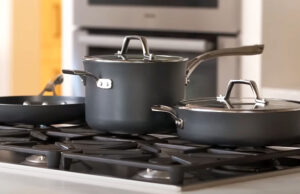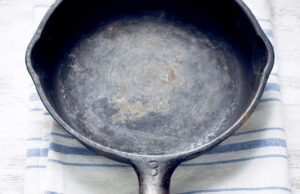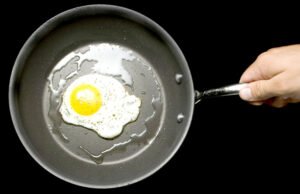As an Amazon Associate, I earn from qualifying purchases at no extra cost to you.
The Best Way to Use Your GE Dishwasher (Expert Tips)
I still remember standing in my kitchen, staring at my brand-new GE dishwasher like it was some fancy spaceship. Buttons everywhere, and I wondered, did I really need all of them? Someone once told me dishwashers are “set and forget,” but that’s only half true. When you know the right order and habits, everything just works better. Let’s walk through it slowly and simply.
Load plates facing the center, bowls at an angle, and glasses on the top rack. Remove big food scraps but skip pre-rinsing. Choose Normal or Auto most days, but use Heavy for pots. Add rinse aid for streak-free shine. Run hot water at the sink before starting. Start with a full load, use detergent pods or proper dishwasher detergent, and clean the filter often for long-term performance.
Preparing the Dishes the Smart Way
Sometimes people rush and toss dishes inside without much thought, but preparation really shapes results. I once put in a pan with dried pasta stuck on it, and it came out almost the same—lesson learned. GE dishwashers handle a lot, but they are not magical scrapers, so removing loose food is key. However, wiping instead of rinsing saves water and still works perfectly.
Although it may feel strange at first, skipping the sink rinse actually helps the detergent latch onto food particles. Too-clean dishes sometimes come out cloudy because the soap has nothing to fight. So gently scrape plates and bowls, then place them in the dishwasher right away. It sounds small, yet this habit keeps smells away too.
Milk glasses and eggs tend to stick more, so give them a quick swirl of water if they’ve been sitting a while. Meanwhile, pots and pans with baked food should soak briefly before loading. I find that doing this as soon as cooking ends saves scrubbing later, and it keeps wash cycles more effective.
Always check pockets of mugs or containers where sauces pool because clumps can block spray arms. It feels satisfying to know everything has a fair shot at getting cleaned. Over time, you’ll notice which food items need attention and adjust easily. Everything becomes second nature after a few loads.
- Remove food scraps but don’t fully rinse
- Soak stubborn food messes briefly
- Avoid letting food dry too long
- Check awkward corners and edges
Loading Everything in the Right Spots
The layout of a GE dishwasher matters more than most folks think, and I learned this when cups started collecting puddles. Lower rack items face the spray arms directly, so place plates toward the center and bowls angled. Pots and bigger dishes go around the sides to avoid blocking movement. Whenever I put a large pan in the middle, water flow dropped and glasses came out spotty.
Glasses and cups always belong on the top rack because the spray there is gentler and helps prevent cracking. Try tilting cups slightly so water doesn’t rest on top and leave marks. Meanwhile, utensils mix best when you alternate handles up and down. Honestly, one small change like this keeps silverware sparkling instead of oddly streaked.
If you have fold-down tines, use them to fit wide bowls or baking dishes. GE racks are designed for flexibility, so take advantage of it. I used to force items in, but that only caused clanking and occasionally chips. Smooth placement means less noise and no surprise damage later, which feels good when you open the door.
Consider leaving space between items; cramming blocks water, and then you redo dishes, costing more time. Think of it like giving every piece room to breathe. After a few cycles, you’ll find your own rhythm, and loading will feel quick and automatic. Realistically, loading well saves more effort than washing by hand later.
- Plates center-facing, bowls angled
- Top rack for cups and delicate items
- Alternate utensil positions for better washing
- Avoid overcrowding and blocking spray arms
Choosing the Right Wash Cycle
With GE dishwashers, cycles might look confusing at first, but once you know them, picking becomes easy. Most days, Normal or Auto handles everyday meals perfectly. I lean on Auto whenever I’m unsure because the machine senses soil levels and adjusts. It feels a bit like letting the dishwasher think for me, and I like that convenience.
Heavy works best when loads include pans or baking trays with sticky food. If I cooked lasagna or roasted vegetables, I choose Heavy so I don’t need to pre-soak forever. Quick Wash helps when guests drop by and I need plates fast, though it may not handle stubborn grime. So, selecting cycles depends more on mess type than time.
Sanitize is great during cold-and-flu season or after handling raw chicken. It raises water temperature to kill germs, offering peace of mind. Eco cycles use less water and energy, but they take longer, which always surprised me at first. Interestingly, longer doesn’t mean inefficient—heat and time replace water power.
Whenever unsure, check your dishwasher door label or control screen for cycle descriptions. Eventually, you’ll just glance at dishes and know exactly what to tap. It might feel like guessing in the beginning, but soon it becomes kitchen instinct. Then every load finishes just right, without trial and error.
- Normal/Auto for daily loads
- Heavy for hard-to-clean items
- Quick for light, fast cleaning needs
- Sanitize for deep germ removal
Adding Detergent and Rinse Aid
Detergent choice seriously impacts results, and I learned that store-brand powder sometimes left chalky streaks. Pods or high-quality dishwasher liquid usually give consistent foam and cleaning power. However, avoid overfilling because too much detergent can scratch glassware and leave residue. Pods keep it simple, especially when kids help load dishes.
Rinse aid makes glasses shiny and helps water sheet off dishes instead of drying in beads. I didn’t use rinse aid for years and always wondered why my glasses fogged. After finally trying it, everything sparkled, and drying improved a ton. Most GE dishwashers even remind you when the rinse aid chamber gets low.
If your water is hard, rinse aid becomes even more important. Hard water leaves minerals that create cloudy film, so rinsing booster really protects dishes long-term. It also helps plastic containers dry faster, which is a nice bonus. Consider adjusting the rinse aid setting if you notice streaks or spots.
Even though it’s tempting to toss in dish soap when pods run out, never use sink soap in a dishwasher. Suds overflow, and I once spent twenty minutes scooping bubbles off the floor. When in doubt, keep an extra pod box tucked in a drawer so you’re never stuck. Prevention saves cleanup stress every time.
- Use quality dishwasher pods or detergent
- Always fill rinse aid dispenser
- Adjust for hard water if needed
- Never use regular dish soap inside
Running the GE Dishwasher the Right Way
Before starting, run your kitchen sink until hot water flows since this warms the dishwasher immediately. Cold starts may leave greasy residue, especially on plates used for frying food. Then choose your cycle, add detergent, and close the door firmly. Modern GE models start quietly, so sometimes I check twice to confirm it’s running.
Try using the Delay Start when washing late so noise won’t bother anyone. I sometimes schedule overnight cycles, and waking up to clean dishes feels great. If your machine has Dry Boost or Heated Dry, pick it when you need dishes cabinet-ready. Although air-dry saves energy, it leaves more droplets.
Sometimes dishes still come out wet, which happens with plastics because they hold moisture. Opening the door slightly at the end speeds drying a lot. It may seem like a tiny step, but steam escapes and dishes finish faster. Also, avoid pausing mid-cycle too often; heat loss weakens cleaning power.
If noise worries you, remember that GE models have quiet modes and insulation, which helps open kitchens. When adding items mid-cycle, wait until spray stops, then close carefully. You’ll get into a rhythm where everything feels smooth and predictable. One small habit at a time builds confidence in using your dishwasher fully.
- Run sink hot water before starting
- Delay cycles for convenience
- Use Dry Boost when needed
- Crack door after cycle for better drying
Cleaning and Maintaining for Long-Term Use
A GE dishwasher stays powerful when you care for its filter and spray arms. Food pieces settle below, so cleaning the filter once a week prevents odors and blockages. Remove, rinse, and scrub gently with warm water and a soft brush. It usually takes under five minutes and feels satisfying afterward.
Spray arms can clog with rice grains or seeds, especially after big meals. When water can’t spray evenly, dishes won’t shine. Twist off the arms if removable, then poke holes gently with a toothpick. Rinsing them now and then keeps pressure strong and avoids disappointing wash cycles.
Wipe the door edges and gasket because grime collects there quietly. A warm cloth and mild detergent work well, and even vinegar helps dissolve buildup. I learned that ignoring this area leads to unpleasant smells later. Keeping small areas clean really pays off.
Run a dishwasher cleaner tablet monthly to freshen and remove hidden grease. I like doing it on lazy weekends when dishes are light. Also, check racks for chips because exposed metal rusts and flakes. Fixing small wear early prevents bigger issues down the road, saving hassle and cost.
- Clean filter weekly
- Clear spray arm holes regularly
- Wipe door seals and edges
- Use cleaner tablets monthly
Final Thoughts
Using a GE dishwasher becomes effortless once you learn the little habits that matter. Every load teaches something, and soon you don’t even think about settings or placement. Just remember scraping, spacing, and occasional maintenance. With these steps, your dishwasher stays reliable, dishes look great, and kitchen cleanup feels lighter every single day.
| Task | What to Do | Extra Tip |
|---|---|---|
| Scrape dishes | Remove loose food only | Avoid full pre-wash to help detergent work |
| Load racks | Plates bottom, cups top | Angle bowls and cups for drainage |
| Choose cycle | Auto/Normal most days | Heavy for tough messes |
| Add detergent | Use pods or GE-approved detergent | Never use sink soap |
| Add rinse aid | Fill dispenser regularly | Helps plastics dry better |
| Start properly | Run sink hot first | Use Delay Start for nights |
| Drying | Use Dry Boost or air-crack door | Towels not needed often |
| Maintenance | Clean filter and spray arms | Monthly cleaner tablet |
Frequently Asked Questions (FAQs)
Is it okay not to rinse dishes before loading a GE dishwasher?
It is okay and actually recommended not to fully rinse dishes before loading a GE dishwasher. Instead, scrape off solid food pieces and place them inside while still slightly dirty. This allows detergent enzymes to bind to food particles and break them down properly. However, if something is heavily baked on, soaking for a few minutes helps avoid hard crusts later. Sometimes people worry about odors, but regular filter cleaning prevents that easily. Just remember, wiping food but avoiding a full rinse saves time, water, and frustration while still giving spotless results.
Is it necessary to use rinse aid in a GE dishwasher?
It is necessary if you want clear glasses and fast drying, especially in homes with hard water. Rinse aid reduces water spots by helping water slide off dishes quickly. Although the dishwasher can run without it, results tend to look dull and sometimes streaky on glassware. Think of rinse aid like a small boost that improves shine and cuts drying time. When I first used it, I noticed instantly that plastics dried better too. So while optional, it feels like a simple upgrade that makes everyday dishwashing smoother and more reliable.
Can I use dish soap instead of dishwasher detergent?
No, you cannot use regular dish soap because it produces foam that can overflow and cause leaks. Dishwasher detergent is designed to clean with controlled suds and high-heat cycles. Even if you’re out of pods, wait or hand-wash instead of pouring sink soap inside. I made that mistake once in college, and bubbles filled half the kitchen floor. It was funny later, but frustrating in the moment. So always keep spare pods stored to avoid risky shortcuts. Your dishwasher and floors will thank you.
Can I put pots and pans in a GE dishwasher?
Yes, you can put most pots and pans in a GE dishwasher, but check if they are dishwasher-safe. Stainless steel and metal pans usually wash well, especially on Heavy cycles. However, avoid delicate coatings, cast iron, and wooden handles because they damage easily in heat and strong detergents. I once put a nonstick pan in, and the coating dulled quickly, so now I double-check labels. If unsure, wash by hand or test gently first. Dishwashers handle a lot, but respecting cookware saves money and stress long-term.
Do I need to clean the GE dishwasher filter?
Yes, you need to clean the filter regularly because it collects food bits and grease. A dirty filter reduces water flow and leads to cloudy results. GE recommends cleaning weekly or bi-weekly depending on usage. Fortunately, it only takes a few minutes: twist out the filter, rinse under warm water, and brush lightly. When I skip this part, I notice faint smells and weaker cleaning. Keeping it clean feels like basic car maintenance—simple, fast, and totally worth the effort.
Do I have to use Dry Boost or can I air dry?
You do not have to use Dry Boost; air drying works, but it may leave more droplets, especially on plastic items. Dry Boost uses heat and airflow for quicker, cabinet-ready results. When I’m in a rush or want everything spotless, I turn it on. However, on calm days, I just crack the dishwasher door open at the end and let steam escape. Both options are fine, so choose based on your needs and energy preferences. Flexibility makes daily kitchen tasks feel easier.
Is it bad to stop the dishwasher mid-cycle?
It is not bad to stop the dishwasher mid-cycle occasionally, but avoid doing it repeatedly because heat loss weakens cleaning efficiency. If you forgot a fork, open the door slowly, wait for spraying to stop, then slide the item in. I’ve done this many times without issues, but I try not to interrupt often. Also, closing firmly ensures the wash resumes properly. Think of it like pausing an oven mid-bake—possible, but best kept rare for ideal results.
Do I need to pre-soak dishes before loading a GE dishwasher?
You do not always need to pre-soak, but really stuck-on food benefits from a short soak. Pasta, cheese, and baked sauces dry like glue when ignored too long. So when I’m finished eating, I fill pans with warm water first, then enjoy my meal. Later loading becomes effortless, and the dishwasher handles the rest. Light crumbs and sauces need no soaking at all. Balancing effort like this keeps things painless without wasting time or water.




